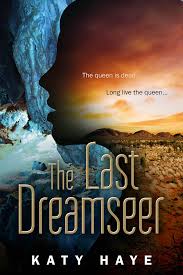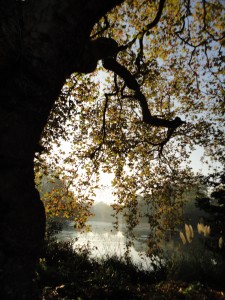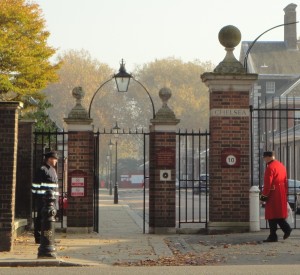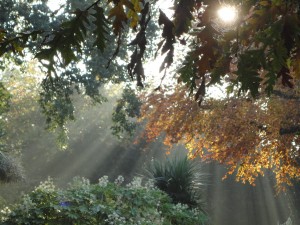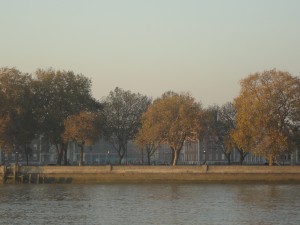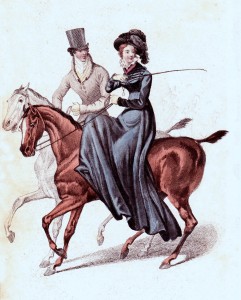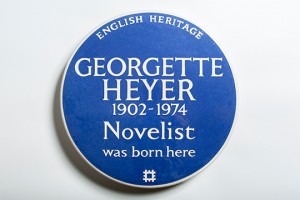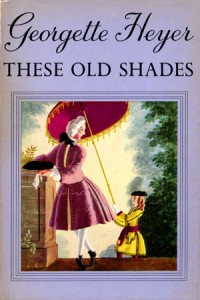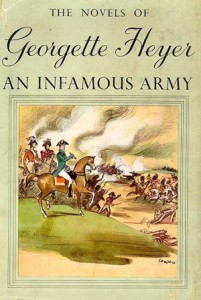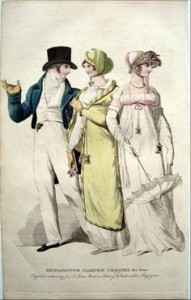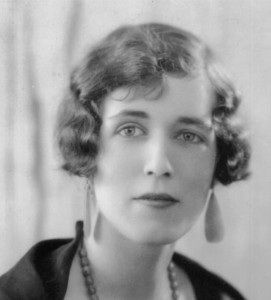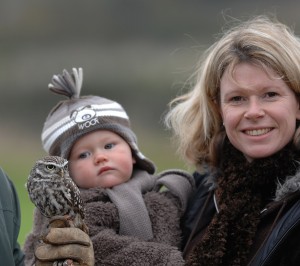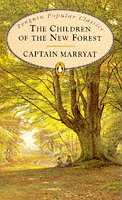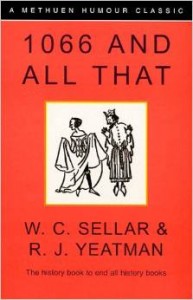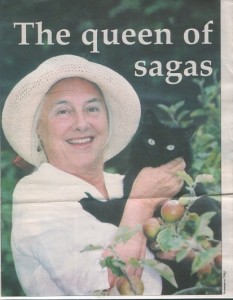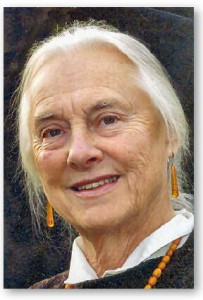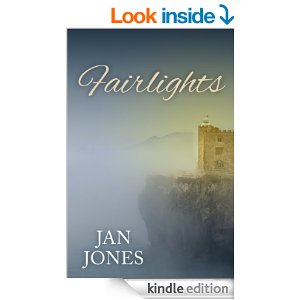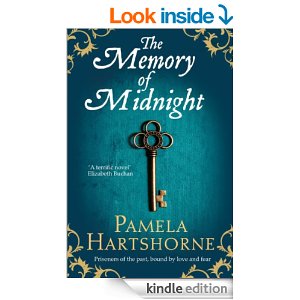Can an Orc Change?
Just a year ago I was writing a 5 star review on Amazon for The Last Gatekeeper, a debut Young Adult novel by Katy Haye. Now she has written the second in her Chronicles of Fane series. The Last Dreamseer, and it is out today and, for the launch week only (November 27th – December 4th), the novel is on sale for 99c./99p, after which it will return to a permanent price of $2.99/£2.49. I haven’t read it yet, but I shall, as soon as it’s on my Kindle. Gatekeeper kept me up until the small hours wanting to know what happened.
The arrival of this novel started me thinking about why I so enjoy fantasy fiction and what is special about the Young Adult end of the genre in particular.
And I suppose the first, the universal element is the opportunity it gives us to marvel. In our rationalist world we are taught to deconstruct, analyse, assess, evaluate. All excellent tools to inform judgement. But wonder is another part of ship. You don’t have to suspend judgement, just to experience amazement, that sense of something immense and powerful.
Who ever said the Niagara Falls were a bit chocolate boxy? Who judges the forest? Wind? Water?
A sense of wonder is followed by the desire for knowledge. And this is where we get into territory that Young Adult fiction is so good at. Consider Inkheart by Cornelia Funke, a particular favourite of mine. Or the wonderful Diana Wynne Jones’s Witch Week. (Pretty much anything by Diana Wynne Jones actually.) Or the strange and scary Chime by Franny Billingsley – tag line ‘The story of a wicked girl has no true beginning. Knowledge is good and necessary but it is never enough.
Knowledge on its own cannot find solutions. You also have to overcome fear, understand consequences, have some idea what drives other people and know yourself. And then Choose.
Can you – do you want to –leap mountains in a single bound? Do you go through hidden doors to who knows where?
And this is where much Young Adult fiction is so interesting. It seems to me that Tolkien said there were temptations to overcome and times of trial but your identity was set and the moral path was laid out. An orc was an orc. Writers like the ones I’ve named, including Katy Haye, seem to say that you have to find both for yourself. For someone like me, ineradicably committed to a happy ending, that is irresistible. Maybe someday, somewhere, someone will write the book where an orc finds he’s a gardener. Please.
Mysterious November 1st
This is the middle day of the Hallowtide. In the days of the medieval church, it marked the end of harvest and the coming of the dark days of winter. It is All Saints Day. According to Sir James Frazer’s Golden Bough (though other authorities disagree with him) this coincides with the Celtic Festival of the Dead, Samhain.
Though neither Celt nor mediaeval monk, I suspect I share some feelings with them. In these days after the autumn solstice, the light and the landscape shift into the unfamiliar. It is fleeting. But it acts powerfully on the imagination. For instance, today I took a walk I have taken many times before …
… through prosperous terraces, the newest of which is 100 years old, towards the river which the Anglo Saxons knew. There was obviously mist over the water. As I approached the Royal Hospital (founded by Charles II, allegedly at the urging of Nell Gwynn, to house veteran soldiers), though the river was still out of sight, I could see mist, grey as smoke, shifting among the turning leaves of the great trees in the Hospital’s park.
I was trying to photograph the old gateway and the mist. I didn’t even realise the scarlet-coated pensioner was in the picture until I got home. But there he was, his coat brilliant in the afternoon sun, just as the coat of his predecessors would have been in all the centuries since Sir Christopher Wren built the place, 300 years ago.

Albert Bridge (‘Troops Break Step’ says a Victorian notice) looking towards Chelsea Bridge, Westminster and the City
So then I walked down to the Albert Bridge, surely the prettiest of the London bridges, and crossed in brilliant sunshine while, to the east, the towers of the City shimmered in that mist down stream.
Then into Battersea park, where there were families, parents leading children, children guiding parents, lovers, people who were lost, people who had just met, by chance or appointment, people running with dogs, sitting with dogs, carrying dogs whose little legs had given out after strenuous hours of playing in that great bosky place; Russians, Brazilians, Spaniards, Scots, Bostonians, Texans, Poles, Scandinavians, Japanese … And in the middle, the great gorgeous bandstand, gradually revealing itself in hangings of gold and silver as the leaves fall . . .
. . . to the lake , like a mirror, where trees are deceptively luxuriant, deceptively green, both above and below the water, and the unwary might be tempted to step out onto that perfect glassy surface and dance.
Only as you go into the more densely wooded parts you see that the leaves are indeed falling; that the horizontal sun, hitting you between the eyes, hides the truth of the ending year in a blast of crepuscular rays you feel you could climb up to the point from which they emanate to . . .
what?
Lake chillier. Great tree trunk menacing. Sun withdrawing. Mirror errupts.
No sun now. This is the territory of Oberon. You may not be welcome.
And then, blessedly, you fight your way back to the river, the sun is still shining, people are laughing and bicycling and running and drinking coffee. There’s even a speedboat breaking the speed limit on the water. And there, across the river, is smiling order and the trees putting on their autumn finery and all is well with the world again. For now.
Georgette Heyer: After the Plaque
Random jottings from the day by someone who felt privileged to be there, along with Georgette Heyer’s family – nephew Major General Jeremy Rougier, daughter-in-law and dedicatee of FALSE COLOURS Susanna, Lady Rougier and grandsons Nicholas Rougier and Noel Flint – friends, countless devoted authors and an extremely enthusiastic home team from Wimbledon.
To start with authorial trivia – we used this illustration from La Belle Assemblee as the back cover of the programme. It was kindly provided by Regency author Louise Allen, from her personal collection of prints. (I feel Miss Heyer would have approved.) We both suspect that it may have been the inspiration for Sophy’s dashing riding habit which she is wearing when she encounters Miss Wraxton and Charles in the Park and Miss Wraxton pointedly only compliments her horse.
I promised that I would put up my take on events on the great day when Georgette Heyer and her birthplace received an English Heritage Blue Plaque. There is a great account of the history and purpose of Blue Plaques on their website . The very first person to be awarded one was Byron. I hope that would have pleasedMiss Heyer – and possibly made her laugh.
There is a truly excellent account of the unveiling — with the bonus of a little trip behind the scenes – by novelist Elizabeth Hawksley.
And then the 50 people who had attended retired to the Garden Hall at St Mary’s Church for tea and fizz, organised primarily by grateful author enthusiasts and the Romantic Novelists Association. We had an advisory panel of mainly Regency writers and Jen Kloester, Heyer’s biographer; I ran the Spreadsheet; while indomitable RNA stalwarts Jan Jones and Roger Sanderson made sure everyone was fed watered and had somewhere to sit. Remove balloons, replace flowers with much loved favourite Georgette Heyer books and you get the picture:
To interpolate another behind the scenes revelation here, the organisers did audition prosecco for the fizz role, on the grounds that is was light, summery and economical. But we rejected it in favour of champagne. Prosecco never achieved a mention in Heyer’s books and she deserved everything as handsome as we could make it. Though, as one gentleman reader pointed out, she mentioned champagne at least as often in connection with boot polishng as she did with quaffing. Maybe we should have had ratafia or orgeat .Yes, OK, I was OIC organisation and am still too close to it!
It was a terrific party – one of the nicest I’ve ever been to. People who had never met before were already chatting as they walked in through the door. There was huge satisfaction at the recognition of Georgette Heyer’s much loved work. For once, you felt, justice had been done. I heard favourite quotations on all sides – ‘I meant a well-bred horse’ ‘Hyde Park soldiers’ ‘a little bit on the go’ — and people who had never met before collapsed into shared laughter over a treasured Heyer moment. Above all it was warm, and friendly and fun.
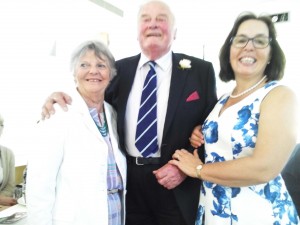
Susanna, Lady Rougier, Maj Gen Jeremy Rougier, Dr Jennifer Kloester
photograph courtesy of Miranda Spatchurst
We were to have favourite readings over tea and it had fallen to me to choose them. As one of the world’s natural democrats, I had asked readers to tell me their favourite book, character and incident. Democracy is a terrible trap. People who wanted the same book, didn’t want the same incident or character. Cat herders of the world unite! In the end we had pieces from THE UNKNOWN AJAX, VENETIA and AN INFAMOUS ARMY. They were all splendidly read by actor Ric Jerrom and each book was the favourite of at least two people present. The company was spellbound. (‘Rapt,’ said my Dearest Friend and Severest Critic, in between buttling for Britain. He had just read AJAX, as his first ever Heyer, and had a lot to take in.) The announcement of VENETIA was received with a gusty sigh of pleasure.

The Pan Edition which was sitting on one of the tables
And yes, that was the scene Ric read, complete with dog.
In my Democratic Consultation on the readings, the winner by a fair margin was AJAX – people even wanted to hear the same scene – the splendidly theatrical final Pageant of Ajax, with Richmond drunk, Claud rising astonishingly to the occasion, and Lady Aurelia, a mere female with every one of her eleven earl ancestors at her back, dismissing the Officer of the Law in one crisp speech. I’ve always admired that scene but, read aloud, it was funny, exciting, humane and touching on so many levels. ‘Great writing,’ said Ric Jerrom, who hadn’t read her before. His is the masterly voice of Jack Aubrey and Stephen Maturin in the audio versions of Patrick O’Brian’s masterwork.
The big romantic title missing, of course, was the perennial favourite, THESE OLD SHADES. And – was it Fate? – the two people who had voted it their favourite, didn’t manage to make the tea. That coincidence gave me a frisson, I admit. Georgette Heyer married in St Mary’s Church in 1925, just six weeks after her father — mentor and greatest friend, who utterly supported and believed in her writing and whose work she critiqued and vice versa – had died suddenly after a game of tennis. It was a terrible loss. But he had already commented on THESE OLD SHADES , perhaps her most joyful book and unashamedly high romance, So the book was ready for publication, with his notes on her ms.
And following the reading of Colonel Audley’s encounter with Captain Kincaid of the 95th from AN INFAMOUS ARMY, Georgette Heyer’s nephew, Major General Jeremy Rougier, told us a brilliant story.
In 1964 he was a military assistant to a member of the Army Board (the top management of the Army) and they paid an official visit to Belgium. On a free afternoon they were taken on tour of the battlefield at Waterloo by the Professor of Military Studies at the Belgium Military Academy. Their guide was fascinating; he knew the position of every regiment at any time on both sides. “At about 3pm Napoleon was standing here – no, here,” he would say, moving 10 foot to record the precise spot. At the end he presented him with a signed copy of Georgette Heyer’s book and explained their connection. ‘He was as near speechlessness as a professor of military history can be,’ said the Major General. ‘He said, ‘This is the nearest to reality that one will ever come without having been there.” And he fainted!’
Allowing for the professor’s excessive sensibility — the storyteller’s dramatic licence was much appreciated — the readers of Georgette Heyer present were gratified but not really surprised.
For this was really a day in which people who knew her worth came together and celebrated that the word was getting out there. I had asked a number of them to give me their personal experience of reading her books. So I want to end this post with the very first reader to send me his contribution. It is a good representative of what we were all saying in our different ways.
‘As a young medical student, I came across ‘The Corinthian’. I think my brother discovered it first. I loved it; I thought it was hilarious and laughed no end. That set me off on reading Georgette Heyer books. I particular like the Regency stories with a nice plot, e.g. ‘The Reluctant Widow, ‘The Talisman Ring’, ‘The Unknown Ajax’, ‘The Toll Gate’ etc. Then I discovered some more historical novels, starting with ‘Royal Escape’ and ‘An Infamous Army’. Finally I came across ‘Envious Casca’ which set me off to reading all her detective stories.
‘In all of these different types of novel, the characterisation is so well done and reading them is such pleasure however often one has read them before. These are books to own and keep permanently on one’s bookshelves (or perhaps on Kindle?), not borrow them from the library. Whenever I am ill enough to retire to bed, I always take a Georgette Heyer book to bed with me to cheer me up.’
He emphasises something it is easy to forget. When I started to help with this celebration, I said to people who muttered about the time I was taking away from my writing to spend on it that a) it was a unique occasion and b) it was a small thank you to Georgette Heyer for a lifetime of interest and pleasure. I said it lightly – well, irritably sometimes — but it was true. A lifetime. And every reader I approached to write something, to help, to come along said the same thing.
So many lifetimes made happier by her books.
What a legacy. What a writer.
Georgette Heyer: The Space Between the Words
Re-reading Georgette Heyer’s work in advance of Blue Plaque Day has been an unexpected voyage of discovery. I’ve loved her books for ever, of course. But typing out an extract from AN INFAMOUS ARMY gave me a real jolt.
It is the morning of the battle of Waterloo. Some men, sleeping out in the cold and wet, have died in the night and everyone is sodden: old soldiers became busy drying their clothes and cleaning their arms; young soldiers stared over the dense mist in the valley to the ridge where the French were beginning to show themselves. Read it aloud, as I did. In two paragraphs she gets all the terror of the impending battle, the imminence of death, the fear of the raw recruits, the numbness of those who have been here before.
And I realised exactly what makes her such a brilliant writer for so many different sorts of readers. It’s in the things she doesn’t say. As Browning had it, she does the thing shall breed the thought. Then there comes that little electrical charge between what she has written and your imagination and suddenly, there you are, seeing what she saw, feeling what you feel.
Consider what Sarah McConnell was saying, in response to my last post, about that agonising scene in SPRIG MUSLIN. We readers have had a picture of Lady Hester – whose family think she’s a born spinster. She runs her father’s household and is regularly called in to nurse or babysit by her married sisters. She’s past the first blush of youth, not very pretty, turned down the only proposals of marriage she ever received and is really a bit vague. Then, suddenly, rich Sir Gareth Ludlow with whom she has been friends ever since his spirited first love died, proposes. She turns him down and he, being a reasonable man, sets out the advantages of the match: her situation is not happy, she would be at no one’s beck and call, with a position of the first consequence and a husband who would not make unreasonable demands.
‘You may be sure that I should always attend to your wishes, and hold you in respect and affection. Would that not mean a happier life than the one you live now?’
Her face was very white; she pulled her hand away, saying in a stifled voice: ‘No — anguish!’
This seemed so strange a thing for her to have said that he thought he could not have heard her aright. ‘I beg your pardon?’ he said blankly.
No more words but it’s all there: the pain of unrequited love and, worse, the sheer awful loneliness of pain unacknowledged and unacknowledgeable. In a sentence. God, she was good.
Or there’s my own favourite, the moment in FRIDAY’S CHILD — which up until then has been pure joy, as if Jane Austen had written Bertie Wooster — when the heroine runs away from her husband and his daft friends try to help her:
She bent her head, looking down at her tightly clasped hands. ‘Sherry – Sherry doesn’t love me, you see. He– he never did love me. If I had not been such a silly g-goose, I should not not have — For he never pretended that he loved me you know.’
George’s face twisted. He came quickly back into the room and laid his hands over both Hero’s and gripped them. ‘I know,’ he said in a moved voice.
She nodded. ‘Yes. I-I thought you did, George. So, you see . . . ‘
There was an uncomfortable silence.
And you see that they are not just daft any more, not even George Wrotham who has been stamping about like Lord Byron at his worst and generally making a cake of himself over the Beauty. The feelings are real. They hurt. You don’t want to spend too much time there, any more than you want to press on a bruise, but you know.
That was when it occurred to me – what a total gift to a film maker. The delicious prose, the mock heroic authorial comments, no you couldn’t put those on the screen. But these moments of truth coupled with some of the best dialogue outside Restoration Comedy or PG Wodehouse – what a treasure trove for a screen writer, for an actor.
Of course, those wonderful Georgette Heyer readers had got there first. There’s even an online petition you can sign. It had 1,238 signatures when I found it.
Now it’s got one more.
Georgette Heyer and her Readers
Fans of Georgette Heyer will feel a quiet sense of satisfaction at the news that English Heritage are to place one of their Blue Plaques on her first home in Wimbledon next month. It is another step towards the public acknowledgement of a truth which, if not yet held universally, has been acknowledged by countless people all round the world for a long, long time. She is a Treasure.
But, as is the case with so many Treasures, we can’t all agree why and, like every writer I know, she does have her detractors. (Shakespeare? Couldn’t plot for toffee. When people praised WS’s manuscript for his ‘never blotting out line’, Jonson wittily replied, ‘Would he had blotted a thousand.’ Killer punch there, Ben.)
Carmen Callil, a woman of whose publishing achievements I am in awe, allegedly opined that Heyer took Jane Eyre and rejigged it 57 times. Not true – Heyer never really hit the Gothick note. And even her most enigmatic and brooding hero has a sense of the ridiculous, which neither Mr Rochester nor Jane quite manages. But I completely see why a lively feminist publisher would take agin books in which the highest good to which the heroine aspires is marriage to an eligible –i.e. always wealthy, often titled — man.
More seriously, an Editorial Director I much admire told me a few years ago that Heyer had badly needed editing. I don’t know how that would have played with the strong-minded Heyer. From her career-long vituperative joust with the respected editor of Woman’s Journal, Dorothy Sutherland (who tried) I suspect that Heyer wouldn’t have put up with it. And if a publisher insisted, it might have shut her up for good. The loss doesn’t bear thinking about.
Mind you, Sutherland’s preferred title for Regency Buck wasn’t great, even without the connotations that have accrued to it since 1935. And her strap line? Words fail me.
–in the Dare-Devil Days when Men Were Men and Women Seductively Coy!
But I don’t mean to talk about my own opinions here. These are not my ideas, but those of her millions of readers. For since the Blue Plaque announcement, I have been trotting through the Forest of Internet in search of Heyer fans and found — well, overwhelmingly more than I expected. Of course there are the Heyer Appreciators, many of whom are to be found at Almacks. And from Mumsnet through The Guardian to Jane Austen blogs and uncountable numbers of bloggers — some loving her for ever, some just discovering her, some arguing furiously over where she did and didn’t do what they wanted (Smart Readers Trashy Books is really good at that) — Heyer’s work is considered seriously by a very high class of reader indeed. They are thoughtful, principled and often terrifyingly well- informed. I take my hat off to them.
So Miss Heyer’s readers say:
- she’s writes a cracking good story
- she’s witty and so are her characters
- in fact humour is the first reason many people read her
- romantic situations are well drawn, romantic satisfaction variable – but since some readers adore a book that others hate, that probably reflects temperamental differences as much as anything
- her style is a delight
- she takes you into a fully realised, detailed world
- her sense of period feels spot on
- her history is well-informed and perceptive – also accessible
- her characters have life, fire and principles, even when they’re not very good ones
- her secondary characters are all three dimensional, intrinsic to the story and sometimes delicious
- her books differ more widely than you’d expect or than she herself seems to have thought
- they re-read her, sometimes again and again, over their whole lives
- the good end happily in her books and if the bad don’t end badly, there is nevertheless a sense that justice has been done
- she gets you through bad times
- she both observes and explodes genre expectations (bit narrow this one, but it interests me, so I’ve bunged it in)
- she crosses generations – I noted how often the commentator found Heyer’s books on the shelf of a mother, grandmother, family friend or shared the long loved pleasure with a daughter or granddaughter.
- she is reticent, not just about her personal life but about the emotional development of her characters and their experience of falling in love. (I’m going to come back to this. I think it’s true, especially in her quieter books and I have come to like it. Some readers don’t so much.)
- she’s fun
- with substance
Attendance at the blue plaque unveiling is now up to capacity.
I’ll maintain a waiting list, if anyone would like to come and doesn’t mind waiting to see whether there’s room. Sorry about that, but delighted that so many people want to come and celebrate Georgette Heyer and her work.
*Byatt, A. S. “An Honourable Escape: Georgette Heyer.” Passions of the Mind: Selected Writings. London: Chatto & Windus, 1991. 258-65.
—. “The Ferocious Reticence of Georgette Heyer.” Sunday Times Magazine 5 Oct. 1975: 28-38. Rpt. In Georgette Heyer: A Critical Retrospective. Ed. Mary Fahnestock-Thomas. Saraland, AL: PrinnyWorld, 2001. 289-303.
The Little Owl Moment
A Little Owl Moment is when time stops for a second. The world floods with delight and hope. And memory grabs it.
In Gloucestershire, there is a small charity which advances the conservation of British owls and other raptors and rescues the wounded and ill-treated. It is called The Barn Owl Centre. I learned about it a few weeks ago. I am so glad it exists. Please help it, if you are too.
The owl is the bird of Athena, goddess of wisdom, inspiration and civilisation and fangirl of the hero Achilles. No surprise, then, that owls appeal to writers – from an anonymous mediaeval minstrel, through Shakespeare and Robert Browning to T H White and J K Rowling. And me.
Once I lived in a cottage at the bottom of a hill, surrounded by woods and fields. It was not a happy time. The present was out of control and the future scared me.
Then, one night I came home late. In the light of a wonky Victorian lamp post, I could see something sitting on the dry stone wall round the cottage. The thing was quite small, hunched and rather shapeless. Someone must have found a child’s toy and left it there to be reclaimed, I thought. I went to open the gate – and the shapeless thing rotated its head an impossible degree and opened its eyes at me.
Now Little Owls, for such it was, do eyes in a big way. Pantechnicon headlights could take their correspondence course. Glaring at you from a distance of ten feet or so in the dark, they have quite an effect. I recoiled, stumbled and slid into the ditch that ran beside our garden wall. The Little Owl shuffled away along the wall about fifteen feet or so and carried on glaring. If ever an owl said, ‘Bugger off and let me get on with finding supper,’ that one did. Wet, muddy, and more than a bit whiffy (it was not one of your purling stream sort of ditches) I began to laugh.
I have seen them two or three times since, over the years. Every time it’s special. Totally absorbing, humbling, profoundly satisfying. What my friend Karin calls a levitating experience, in fact. So ‘Little Owl Moments’ has become my personal shorthand for that sensation of time standing still and everything being in harmony. Rare. Magic.
Last time I really saw one – well two, actually- it was late afternoon, and I had a newly broken wrist and an unfinished book that would have to go on hold for months as a result. But even so – the Little Owls, fossicking about, alert for prey, flexing those mechanical grab talons, and generally doing their thing, took me out of self-pity, cheered me up and generally made me feel that Something Good Would Come of This.
They are beautiful, of course, with that brown and ivory plumage, as if apple blossom has been dumped over them and they aren’t too pleased about it. But that expression is what I particularly cherish. Permanently disgruntled. My Consultant Birdwatcher tells me that even proper ornithologists, sworn enemies of anthropomorphism, refer to it as ‘serious’. (Little Owls can also look interested, suspicious, busy and quizzical, but don’t tell the Birdwatcher.)
As well as conservation and study, the Barn Owl Centre of Gloucestershire rescues injured and mistreated birds and releases those which can make it in the wild. It hosts photography days, where a selected number of photographers can meet the permanent residents and its image gallery is just breathtaking. It is staffed by volunteers who care for the birds (enduring sadness when some don’t have a happy ending, as well as the huge buzz when they fly off free or settle happily into their new home) and educate the visitors.
And now they’re trying to raise funds as well. Please show them their efforts are valued; protect the birds; donate online here . And give yourself a Little Owl moment.
Please note that all photographs in this post are the copyright of the Barn Owl Centre to whom I am indebted for permission to use them here.
Reading discoveries: The Martian
For the last year I have had a professional task which I have found almost impossible. It has made me think about writing in quite a new way. And also about how much the reader always brings to a book. For a first read, the writer is a sort of tour guide to the author’s interior landscape and the world of the story. But what the reader takes away is so much more than what the guide actually says. It depends on the reader’s habits, tastes, experience, expectations and even previous reading.
This month I found The Martian by Andy Weir. I fell over it by chance, browsing. It’s science fiction, a genre I like rather than love and by which I am often disappointed. This one was brilliant.
I ended by sitting up until 3.45 am to finish it because I couldn’t go to sleep without knowing the end. But it was about so much more than the ending. It sets up a series of dilemmas which mostly seem irresolvable until a cast of believable characters apply brain, body and will. The stakes are life or death right from the start — and then they escalate! The sciences — physics, chemistry, thermodynamics, even agriculture – almost become characters. One by one they are tested and may or may not betray our hero. I was on the edge of my seat, not just at the end but again and again throughout this thrilling book.
Now I need to buy a physical copy; e-book is not enough. This is one I will re-read, probably many times. Why did I LOVE it so?
Well, excitement, obviously. It’s a cracking book by anyone’s standards, written with passion. Andy Weir sounds an interesting guy from his interview, a self-proclaimed nerd who initially self-published his book of the heart. He might not call it that, of course. But note: he says ‘The deeper into the book I got, the more excited I became.’ Yup. Been there. Bliss. And it leaks out to the reader, believe me.
But what did I, the reader, bring to the experience? Me, non scientist, non nerd? I’m even terrified of changing from Windows XP, for God’s sake.
Though I did enjoy physics at school. And, of course, I plant stuff and sometimes it grows. That’s two things I share with The Martian. I like the way he goes about it, too. He evaluates, considers his options, works out an idea in principle, refines it. Yes, I do that. Sometimes. Then he puts his plans into practice in an orderly way. Um no, I could learn from him there. And he’s attractive. He feels all the things that I would feel but he doesn’t panic. And he’s heroically fair and philosophical. I find both pretty sexy.
In fact I once asked a group of romantic novelists which was the quality they most loved in a hero: looks? wealth? power? sophistication? biting wit? fond-of-dogs? ‘Competence,’ said one. Ah yes. We all went a bit dreamy. Well, the Martian is definitely the sort of guy who could put up a shelf and start the car on a cold day, if that’s your preferred lust object.
And I have been in love with one of the Martian’s literary ancestors for most of my life. In Victorian England a retired Naval Officer called Marryat wrote a book for children about a family of Royalist orphans who were rescued and hidden by their gamekeeper after the Battle of Naseby. Marryat was definitely a Cavalier by inclination and his hero is undoubtedly the hotheaded eldest son. But I loved his younger brother, Humphrey, who works out how to damn streams, catch eels and generally make life manageable and, above all, interesting.
But then, in reading The Children of the New Forest, I had already picked up the 1066 And All That view of the Civil War – Cavaliers, wrong but romantic; Roundheads, right but revolting. And to be fair to Marryat, he does manage one decent Roundhead, at least.
The world of The Martian is Roundhead-free. Nor is this science fiction with monsters and aliens. This is about real people. Lots of them. Yes, our hero is on his own. We tune into his interior monologue, all of it, including the stuff he doesn’t tell anyone else, even when he can. It is like being in our own heads. But there’s all the other people involved. There they are, wheeling remotely like the rings of Saturn – close colleagues, family, Management which could make a story in itself) along with office politics, media politics, even, at one point and very convincingly, international politics. The decisions in this book are not wholly the Martian’s. Other people’s plans are crucial to his survival. And everybody makes mistakes.
So there’s
- exciting plot
- author persuasiveness (bit mealy mouthed but can’t think of another short way to describe it)
- fabulous hero
- world of the story
- AND? – well, humanity.
The Martian has a generosity of spirit about his fellow man, as we learn in the first couple of pages, while he’s calculating how long he’s got to live. Mostly he’s not wrong. It makes for a mind-blowing climax.
Great character. Great book.
GUEST POST Beryl Kingston
Welcome to the first guest I have hosted on my blog, distinguished novelist Beryl Kingston, whose Easter Empire trilogy (inspired by the fact that a woman founded WH Smith) was a favourite, long before I met her, let alone enjoyed the privilege of her friendship.
Like me, she has been tagged to contribute to the Writing Process blog roll, in her case by lovely Mary Stewart-inspired author, Jan Jones. Over to Beryl
My Writing Process
What am I working on?
This is going to sound like showing off but at the moment, after three and a half years when I couldn’t write at all, I’m polishing off a collection of poems, a play about William Blake’s trial and a novella about a conceited cat, all of which are taking me in different directions.
How do my stories differ from others in my genre?
I suppose the honest answer is that I don’t know. My first agent, the renowned Darley Anderson wanted me to be classed as ‘a romantic writer’. I never thought I was.
Why do I write?
I started writing when I was seven because I knew I wasn’t allowed to tell anybody about what was happening to me and I had to tell someone so I wrote it all down in a diary, which was private. Now it is because I enjoy it and there are always tales to tell.
How does my writing process work?
I used to assume that my writing method was more or less what other writers did, if I thought about it at all, but then I got to know other writers and discovered I was odd. There is a pattern to it though and a method, of sorts, and it works for me.
I spend about three months getting to know my main characters, what they think and why, how they talk to a variety of people, what and who have made them what they are. I do it until I can live in their skin. It’s rather like method acting. At the same time I visit the settings for my story. (I used to love doing that when Roy was alive. It was like a holiday.) I try to find a different setting for each new book and make several visits in the course of a year so as to see the place in all four seasons and different kinds of weathers. I fill notebooks with as much detail as I can get. Then when I’m living under the skin of my protagonists, and the plot has begun to form out of all the things that are going to happen to them, I start to write.
I don’t begin at the beginning of the book and plough on doggedly until ‘The End’. I’m much too self-indulgent for that. I start with the scene that’s singing to me most strongly. In my first book it was the moment my hero sees the woman he’s going to marry, in another it was the Battle of Trafalgar, in another it was when my heroine meets up with anti-road protesters and sees her first demonstration. Then I move on to other scenes I fancy. When I’ve got what I call a run, a series of scenes that ought to run in sequence, I stitch them together. It’s rather like making a patchwork quilt and it’s a very useful part of the process because, if I’m reading something and it’s boring me because I want to get on to the next ‘good bit’, I simply cut it out, and if I see moments that have – or will have – ‘echoes’ I can work on them too. Eventually so many runs are stitched together that I have a book. It’s a very satisfactory way to write – at least for me – although it does look a muddle.
Mary Stewart RIP
Such sad news that wonderful Mary Stewart died on 9 May. I have been watching again the interview she gave to Off the Page on Scottish television.
In 2006 the Romantic Novelists’ Association gave Mary Stewart a Lifetime Achievement Award. I collected the tributes. From my own archive, as far as I can tell, this is what we told her then.
The Romantic Novelists’ Association salutes
Mary Stewart
and says thank you for
hours of wonderful reading
and
for inspiring so many of us
18th August 2006
From RNA Members
Diane Pearson writes
Mary Stewart, almost single handed, brought the gothic romantic novel back into contemporary popularity, giving it a unique new quality that was essentially her own. Her books are now household names.
Diane Pearson, editor and author, wrote international best sellers ‘Czardas’ and ‘Summer of the Barshinskys’, among others, and [is] was President of the Romantic Novelists’ Association.
Jan Jones writes
“It was the egret, flying out of the lemon-grove that started it.”
That, the opening line from The Moonspinners, sums up what Mary Stewart means to me. The to-die-for sense of place expressed in just a few skilful words. The delicious hint of adventure and romance. The promise of a glorious few hours, curled up with one of my favourite authors, oblivious to the outside world.
I could read Mary Stewart’s books over and over – and every time I do, I’m transported again to that precious state where nothing else matters except what you are reading.
Thank you, Mary.
Jan Jones is the author of ‘Stage by Stage’, winner of the 2005 Joan Hessayon Award for a First Novel and many others,most recently ‘Fairlights’.
Pamela Hartshorne writes
Mary Stewart’s writing is such a model of intelligence and good taste, that I can’t help feeling she would have little patience with gushing appreciation . … but it is hard not to gush when I think about the enjoyment she has given me as a reader, and the influence she has had on me as a writer. Impossible, too, to choose which of her books is my favourite. I can narrow it down to six (Madam Will You Talk?, This Rough Magic, My Brother Michael, The Moon-Spinners, Airs Abover the Ground and Nince Coaches Waiting) but no further. Every time I read these books, I find something new, something that strikes a chord, something that makes me think “What must it be like to be able to write like that?”
I love the intelligence and integrity of her characters, the way her heroes are barely described and yet are so extraordinarily attractive, but I think what draws me to these books most particularly is the sense of place they evoke, so that I fell when I close the book as if I have actually been on a Greek mountainside, or swum with a dolphin in Crete. And as for the food . . . ! Anyone who has ever read Madam, Will You Talk? remembers the wonderful meal Charity shares with Richard Byron in the Stewart fans, comparing it with the midnight feast after the Easter Ball in Nine Coaches Waiting or the dinner at Delphi in My Brother Michael, all remembered as vividly as if we had eaten them ourselves. It is thirty-five years since I first read a Mary Stewart, but her lucid, luminous prose remains a matchless source of pleasure and inspiration.
Pamela, who also writes as Jessica Hart, is a multi prize winner. In 2005 she won the US RITA for Best Traditional Romance for Christmas Eve Marriage and in 2006 the RNA Romance Prize for Contracted Corporate Wife. Her most recent novel is ‘The Memory of Midnight’.
Marina Oliver writes
Mary Stewart is a storyteller par excellence. Not only can she evoke great tension, her plots are intricate and satisfying. She transports the reader to the places she describes so vividly, that I can imagine myself on a Greek hillside, or a Lebanese valley, smelling the flowers, feeling the heat.
She is also versatile, with books set in different eras and today. The backgrounds are always so convincing. A friend from my reading group who read one of her novels said to me, ‘It’s so good to read a real book.’
Marina Oliver, former Chairman of the Romantic Novelists’ Association, is writer, editor, tutor and reviewer. She has written ‘A Cut Above the Rest’ and many other novels.
Jenny Haddon writes
There are some authors whose words walk with you throughout your life, encapsulating a moment, a feeling. ‘Ah yes, I recognize that,’ you say, for a moment completely aware. From Nine Coaches Waiting:
The air was very still. Below me, in the valley-depths where the river ran, I could see, quite distinctly now, the pale drift of mist. The owl cried again once, very sadly, form the wood. There was a strong wet smell of earth and growing things; the smell of spring . . . not softness, not balm-and-blossoms, but something harsh and sharp that pierced the senses as the thrust of new life broke the ground. The cruellest month, breeding Lilacs out of a dead land . . . yes that was it. That was it. Not for the first time I was sharply grateful to Daddy for making poetry a habit with me. The best words in the best order . . . one always got the same shock of recognition and delight when someone’s words swam up to meet a thought or name a picture. Daddy had been right. Poetry was awfully good material to think with.
So is Mary Stewart.
Jenny Haddon has written forty something books, mainly under the pen name Sophie Weston, most recently ‘To Marry a Prince’ by Sophie Page. She [is] was then Chairman of the Romantic Novelists’ Association.
What a writer we have lost.
Edit Write Tiffle
Thank you to lovely writer Christina Hollis for inviting me to join the My Writing Process Blog hop. It comes at an excellent time for me, as I am just considering how to edit the first draft of the longest novel I have every written. (About 5 Mills & Boons in wordage.) So it has concentrated the mind wonderfully.
Currently I’m writing a story set in 1938 when nobody knew there was going to be a war, though lots of people suspected it and tried to work out what they would do if it came. There is a love story – a big one, with problems of integrity, class and sexual morality all mixed in – but the theme, I suppose, is conflict of loyalties. In the end everyone has to work out his or her own solution. We are all answerable to our own consciences, when the lights are out.
My writing process is best described as close your eyes and jump. That’s what happened when I started this book. As a result, I went in a number of wrong directions. When I was writing 55,000 word category romance, with one story, two major characters and a guaranteed happy ending, this was not an issue. Now, with a multi-character world and at least four story lines, I have to keep my eye on the landing zone. Basically I think it is going to work like this:
• Write – tick
• Read – tick
• Edit
• Write the missing stuff
• Tiffle – more politely known as polishing.
Edit
Done in pen or pencil plus highlighter pens on printed ms, with accompanying notes in a bound notebook. Loose sheets get lost. I have proved this.
1 NOTE incidents/reflections/dialogue that I need to insert to make sense of later developments. Note both where insertion is needed and where it is picked up later. NB Use reference points that Word Search will find. I am now about to kick hell out of Draft 1’s pagination.
2 UNDERLINE, sideline, highlight stuff I need to take out because it doesn’t make sense in this story.
3 CIRCLE stuff where I go on too long, repeat myself
4 QUESTION MARK anything that strikes me as odd, either because of consistency, plot, character or historical fact.
5 BRACKET anything which could be better expressed. Remember less is more.
6 THEN CUT 2) and 3). This is very satisfying! Keep outtakes for future use. Also, some editor further down the line may want them back in.
7 CONSIDER QUESTION MARKS I find this takes me back into the creative process.
8 SAVE ms as Draft 2
Write
I now know the new material that needs to go into my story (1 above), plus the issues that I need to resolve (7) and any Notes To Self that I make as I go along, especially as I approach the end. They are a focussing mechanism, not a shopping list, Essentially I am now back in the writing zone again. From now on I need to fly, not plod.
The main difficulty here, I’ve found, is seamless joining. What works best for me is to find out where the new piece has to go in and then go back and cut the preceding paragraph (or more). This gives me room to get into the writing voice I had when I first wrote that chapter. . If I read the preceding paragraph aloud and then keep speaking as I write on, it starts to feel like the spontaneous flow it should do, and not just a patch and push job.
The difference between the two
Editing is like a builder tidying up his brickwork, chopping off excess putty, filling the odd small hole. Re-writing is like removing a damaged brick and replacing it – you have to make room for it, then smoothe the joins so they don’t show.
Tiffle
This is where I deal with 5). It’s the beauty treatment – clarify, tighten, exfoliate, buff.
Word of warning here: this can go too far. From my past:
ED You said the book was nearly finished. Why isn’t it on my desk?
ME I’m just giving it a last tidy ….
ED (howls) Stop tiffling.
Tiffling is where you can go through your book and replace one word or phrase with another because you like it better. This may be good if you a) know why and it’s a good reason and b) you’re consistent. If you replace ‘silk’ with ‘satin’ and then next day change it back, you’re in a bad way.
Conclusion
That’s the theory anyway. But it’s a BIG book and I have miles to go before I sleep. So I’d be very grateful for suggestions.
Recent contributors to My Writing Process Blog Hop
Christina Hollis Bee-keeper and best selling author of historical fiction and M&B Modern Romance/Harlequin Presents christinahollis.blogspot.co.uk
Jean Bull has loved books all her life. She has worked in everything from teaching to the hotel industry and lived all over the UK, which has inspired her writing. jeanbullswritingblog.blogspot.co.uk/
Margaret Mayo author of scores of successful category romances for Harlequin Mills & Boon margaret-mayo.com/blog/
Cara Cooper writes short stories for women’s magazines, and novellas for People’s Friend, My Weekly and Ulverscroft. caracoopers.blogspot.co.uk
